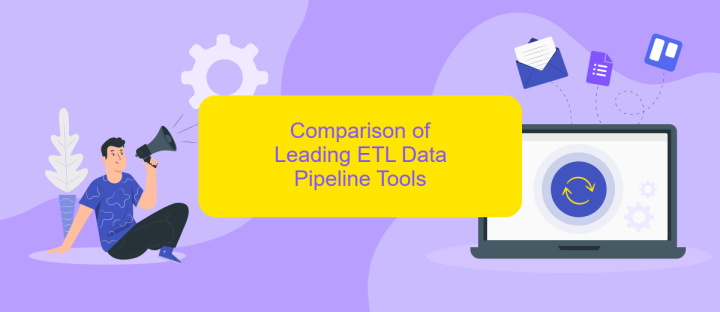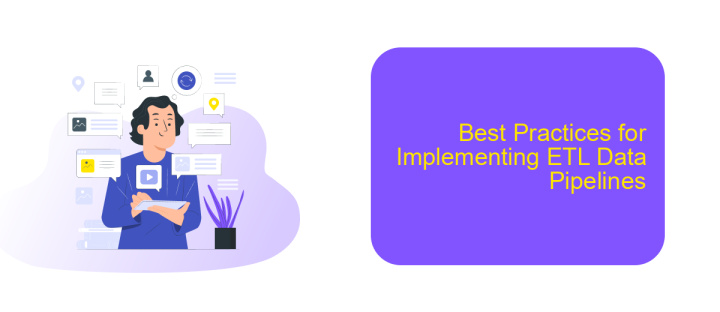ETL Data Pipeline Tools
In today's data-driven world, efficient ETL (Extract, Transform, Load) processes are crucial for managing and leveraging vast amounts of information. ETL data pipeline tools streamline the complex journey of data from various sources to actionable insights. This article explores the top ETL tools available, highlighting their features, benefits, and how they can enhance your data integration and analysis efforts.
High-Level Architecture of an ETL Data Pipeline
An ETL data pipeline is a critical component in modern data management, enabling the efficient extraction, transformation, and loading of data from various sources into a centralized data warehouse. This high-level architecture ensures that data is consistently and accurately processed, providing valuable insights for decision-making processes.
- Data Sources: These include databases, APIs, cloud storage, and other data repositories from which data is extracted.
- Extraction: The initial phase where raw data is collected from multiple sources. Tools like ApiX-Drive can streamline this process by automating data extraction from various APIs.
- Transformation: Data is cleaned, normalized, and transformed into a suitable format for analysis. This step may involve data validation and enrichment.
- Loading: The final step where the transformed data is loaded into a data warehouse or data lake for storage and analysis.
By leveraging tools like ApiX-Drive for seamless data integration, organizations can build robust ETL pipelines that are scalable and maintainable. This architecture not only ensures data quality but also enhances the overall efficiency of data processing workflows.
Challenges in Building and Maintaining ETL Pipelines

Building and maintaining ETL pipelines pose several challenges that require careful consideration and planning. One of the primary challenges is handling data quality and consistency. Data from various sources often come in different formats and structures, necessitating robust transformation processes to ensure uniformity. Additionally, managing large volumes of data can strain system resources, leading to performance bottlenecks. Ensuring real-time data processing and minimizing latency further complicate the pipeline architecture.
Another significant challenge is the integration of disparate data sources. Configuring and maintaining these integrations can be time-consuming and prone to errors. Tools like ApiX-Drive can simplify this process by providing a user-friendly interface for setting up and managing integrations, reducing the manual effort involved. Furthermore, maintaining security and compliance throughout the ETL process is crucial, as data breaches can have severe repercussions. Implementing comprehensive monitoring and alerting mechanisms is essential to promptly identify and resolve any issues that arise, ensuring the pipeline's reliability and efficiency.
Comparison of Leading ETL Data Pipeline Tools

When evaluating ETL data pipeline tools, it's crucial to consider factors such as ease of use, scalability, and integration capabilities. Each tool offers unique features that cater to different business needs and technical requirements.
- Apache NiFi: Known for its user-friendly interface and extensive integration options, Apache NiFi excels in real-time data processing.
- Talend: Offers robust data integration and transformation features, suitable for complex data workflows and enterprise environments.
- ApiX-Drive: Specializes in simplifying integration setups with a wide range of applications, making it ideal for businesses looking to automate and streamline data flows without extensive coding.
- Informatica PowerCenter: Provides high scalability and advanced data transformation capabilities, perfect for large-scale data operations.
- Microsoft SSIS: Integrates seamlessly with other Microsoft products, offering a comprehensive solution for data extraction, transformation, and loading.
Choosing the right ETL tool depends on your specific needs and existing infrastructure. Tools like ApiX-Drive are excellent for businesses seeking straightforward integration solutions, while others like Informatica PowerCenter and Talend cater to more complex data environments. Evaluate each option carefully to ensure it aligns with your business goals and technical requirements.
Best Practices for Implementing ETL Data Pipelines

Implementing ETL data pipelines effectively is crucial for ensuring data accuracy, reliability, and performance. Start by clearly defining your data sources, transformation requirements, and data destinations. This initial planning will help you avoid common pitfalls and ensure a smoother implementation process.
Next, choose the right ETL tools that suit your specific needs. Consider factors like scalability, ease of use, and integration capabilities. For instance, ApiX-Drive is a robust solution that simplifies the integration of various data sources and destinations, making it easier to manage your ETL processes.
- Ensure data quality by implementing validation checks at each stage of the ETL process.
- Automate as much as possible to reduce manual intervention and errors.
- Monitor and log ETL processes to quickly identify and resolve issues.
- Regularly update and maintain your ETL tools and scripts to adapt to changing data requirements.
Finally, always test your ETL pipeline thoroughly before deploying it to production. This helps in identifying potential issues and ensures that your data pipeline performs optimally under real-world conditions. By following these best practices, you can build a reliable and efficient ETL data pipeline.


Future Trends in ETL Data Pipeline Technology
The future of ETL data pipeline technology is geared towards greater automation and intelligence. Machine learning and artificial intelligence are expected to play a significant role in optimizing data transformation processes, making them more efficient and less reliant on manual intervention. This will enable faster data processing and more accurate insights. Additionally, the integration of real-time data processing capabilities will become more prevalent, allowing businesses to make data-driven decisions more swiftly and effectively.
Another emerging trend is the increased adoption of cloud-based ETL solutions. These platforms offer scalability, flexibility, and cost-efficiency, making them attractive to organizations of all sizes. Services like ApiX-Drive, which facilitate seamless integration between various applications and data sources, are becoming indispensable. Such tools simplify the setup of complex data workflows, enabling businesses to connect disparate systems without extensive coding or technical expertise. As data ecosystems continue to evolve, the emphasis will be on creating more intuitive, user-friendly ETL tools that democratize data access and empower users across the organization.
FAQ
What is an ETL data pipeline?
What are the key components of an ETL data pipeline?
How do ETL tools handle data transformation?
What are the benefits of using ETL data pipeline tools?
How can I automate and integrate my ETL data pipeline with other systems?
Apix-Drive will help optimize business processes, save you from a lot of routine tasks and unnecessary costs for automation, attracting additional specialists. Try setting up a free test connection with ApiX-Drive and see for yourself. Now you have to think about where to invest the freed time and money!

